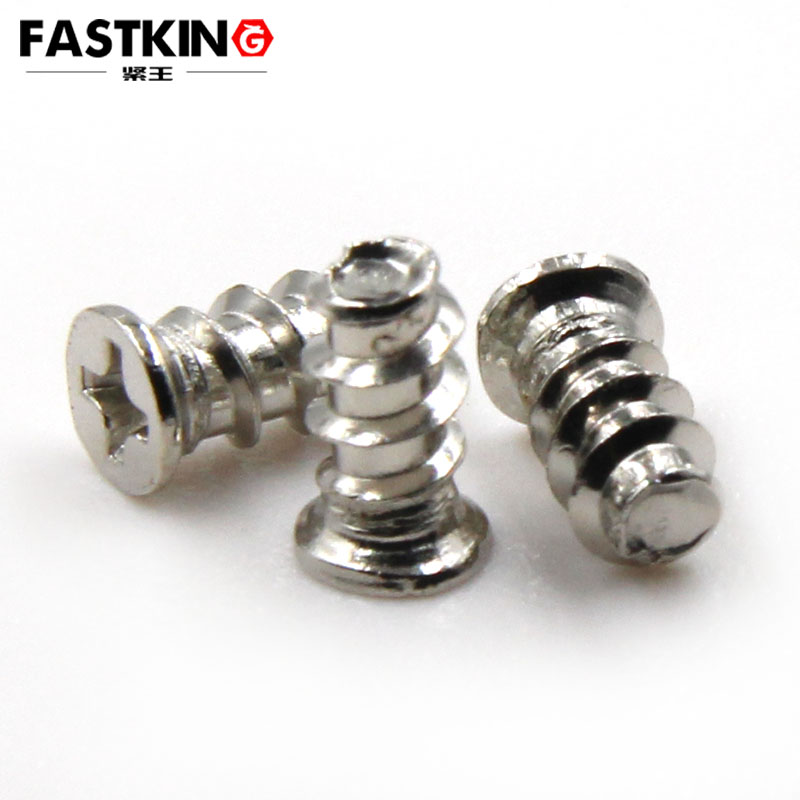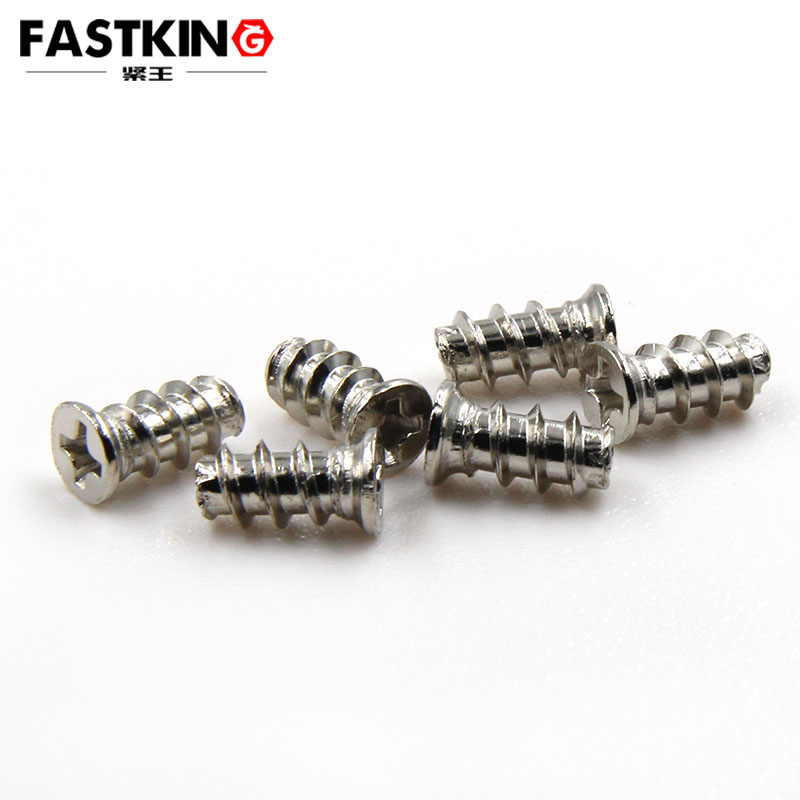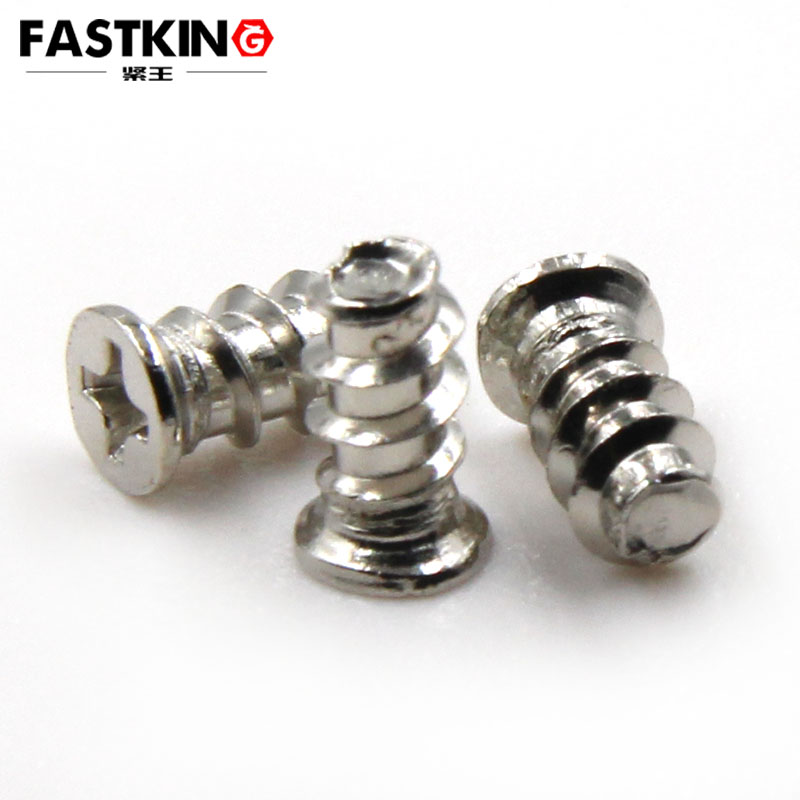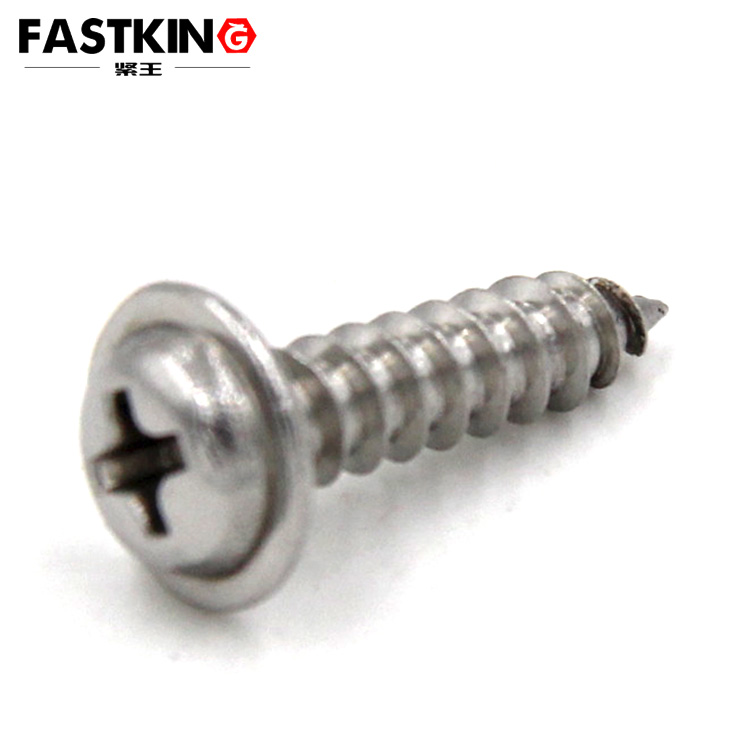- small screw,micro fastener,mini screw
- 0756-8586520
nickel-plated countersunk Phillips flat-tip self-tapping
- Product description:In scenarios such as industrial manufacturing, home assembly, and electronic equipment installation, there is a seemingly inconspicuous component that plays a crucial role — the nickel-plated counters
I. Structural Design: Balancing "Invisible Aesthetics" and "Stable Practicality"
The core advantages of nickel-plated countersunk Phillips flat-tip self-tapping screws stem first from their refined structural design. Every detail revolves around "adaptability," "stability," and "aesthetics," which can be broken down into three key components:
1. Countersunk Head: The Core of "Invisible Fastening"
The countersunk head design is one of the most distinctive features of this type of screw. Its head is conical, perfectly matching the prefabricated countersink on the workpiece surface. When the screw is fully tightened, the head remains flush with the workpiece surface without protruding or sinking. The core value of this design lies in its "invisibility" — in scenarios where appearance is critical, such as furniture, decorative panels, and electronic device casings, it prevents the screw head from being exposed and ruining the overall aesthetics, while also avoiding scratches or snags caused by protrusions. For example, the jointing of wooden wardrobe doors and the fixing of computer case side panels both rely on the countersunk head design to achieve "seamless connection," ensuring structural stability while maintaining a neat appearance.
2. Phillips Drive: Strong Adaptability and Efficient Operation
The Phillips slot on the head is one of the mainstream driving methods. Compared with slotted drives, it has stronger torque transmission capacity and is less prone to "cam-out" (damage to the slot caused by screwdriver slipping). Meanwhile, Phillips screwdrivers are highly versatile and can be easily paired with both manual tools and power tools (such as electric screwdrivers and pneumatic screwdrivers), greatly improving installation efficiency. In mass production scenarios, such as furniture factories assembling tables and chairs, and electronics factories installing circuit board holders, the efficiency of the Phillips drive is particularly evident — it can work with automated tools to achieve rapid fastening and reduce labor costs.
3. Flat Tip + Self-Tapping Thread: No Pre-Drilling Required, Suitable for Soft Substrates
Unlike ordinary screws, the threads of self-tapping screws have "cutting ability," and the flat tip design further optimizes their adaptability to soft substrates. The flat tip has a smooth end without a sharp drill point. When driving into soft or thin substrates such as wood, plastic, and thin metal sheets, it minimizes damage to the substrate. At the same time, the spiral structure of the thread automatically cuts a matching internal thread, eliminating the need for pre-drilling and tapping. This "install-and-tap-as-you-go" feature saves pre-processing steps and is especially suitable for on-site installation or operation by non-professionals. For instance, when a household user assembles a plastic storage cabinet, there is no need to prepare additional drilling tools — they can directly drive the screw into the plastic connector with a screwdriver to achieve quick fixing. Additionally, the flat tip design prevents the sharp end from piercing the back of the substrate, avoiding potential damage to internal circuits, pipelines, or the human body.

II. Nickel-Plating Process: Endowing Screws with Dual Properties of "Corrosion Resistance & Durability" and "Conductivity & Rust Prevention"
Nickel-plating is not just a simple surface decoration, but a key process to enhance screw performance. By forming a uniform nickel coating (usually 5-15 microns thick) on the screw surface through electroplating technology, its corrosion resistance, conductivity, and appearance texture can be significantly improved, allowing it to adapt to more complex environments.
1. Corrosion and Rust Resistance: Coping with Humid and Harsh Environments
Ordinary carbon steel screws are prone to oxidation and rust when exposed to humid environments or corrosive gases (such as kitchen fumes, bathroom moisture, and acid-base gases in industrial workshops). This not only affects the appearance but also causes thread jamming and reduced strength, eventually leading to loose connections. However, the nickel coating has excellent chemical stability — it isolates the substrate from air and moisture, forming a "protective barrier." For example, nickel-plated screws used to fix bathroom towel racks and outdoor lamp bases can remain rust-free in long-term humid environments, extending their service life by 3-5 times. Even in slightly corrosive industrial scenarios, they can withstand 1-2 more years of use compared to non-nickel-plated screws.
2. Conductivity: Meeting Special Needs of Electronic Equipment
In the electronics field, screws not only play a fastening role but may also need to assist in conduction (such as circuit board grounding and signal transmission of electronic components). Nickel has better conductivity than ordinary carbon steel, and the nickel coating can improve the screw's conduction efficiency, reduce contact resistance, and avoid overheating and signal loss caused by excessive resistance. For example, in the fixing of internal circuit boards of routers and the connection of heat dissipation brackets for LED lamps, nickel-plated countersunk Phillips flat-tip self-tapping screws not only fix components but also assist in heat dissipation and conduction, ensuring the stable operation of electronic equipment.

3. Appearance and Texture: Enhancing the "Detail Grade" of Products
The nickel coating presents a uniform silvery-white color with a soft luster that does not fade easily. Compared with black oxide or galvanizing processes, it has a better texture. In scenarios with high requirements for detail quality, such as high-end furniture and precision instruments, nickel-plated screws can match the overall style of the product and enhance visual refinement. For example, a Nordic-style wooden desk paired with nickel-plated countersunk screws creates a contrast between the silver metallic luster and the warm texture of wood — it remains invisible while adding a sense of detail, becoming a "small detail" that elevates the product grade.
III. Application Scenarios: Comprehensive Coverage from "Daily Home Use" to "Industrial Manufacturing"
Thanks to its structural and performance advantages, nickel-plated countersunk Phillips flat-tip self-tapping screws have an extremely wide range of application scenarios. They can play a role in everything from home DIY projects to large-scale industrial production, and their core applications can be divided into three categories:
1. Home and Decoration Field: Balancing Aesthetics and Practicality
In home scenarios, this type of screw is a choice that "combines good looks and functionality." The jointing of wooden furniture (such as wardrobes, desks, and bookshelves), the fixing of decorative panels (such as wall wood trim and baseboards), and the installation of hardware accessories (such as door handles and hinges) all rely on its countersunk head design to achieve "invisible fastening," avoiding damage to the overall aesthetics of the furniture. At the same time, the rust resistance of the nickel coating allows it to adapt to humid environments such as kitchens and bathrooms. For example, the screws used to fix kitchen wall cabinets and bathroom mirror cabinets are not prone to rusting or loosening even with long-term exposure to moisture. Additionally, in home DIY scenarios — such as assembling plastic storage boxes and fixing wall-mounted shelves — the flat-tip self-tapping design eliminates the need for pre-drilling, making it easy for beginners to operate and lowering the installation threshold.
2. Electronics and Home Appliance Field: Meeting Precision and Safety Requirements
Electronic equipment and home appliances have high requirements for "precision" and "safety" of screws, and nickel-plated countersunk Phillips flat-tip self-tapping screws perfectly meet these needs. In the fixing of circuit boards (such as computer motherboards and router circuit boards), the countersunk head design prevents the head from protruding and touching other components, avoiding short circuits. The conductivity of the nickel coating also assists in grounding, improving equipment safety. In the installation of home appliance casings (such as washing machine panels and air conditioner outdoor unit covers), the flat-tip self-tapping threads can be easily driven into thin metal sheets or plastic casings without pre-drilling. Meanwhile, the rust resistance of the nickel coating can cope with humid environments during long-term use of home appliances (such as moisture inside washing machines and outdoor environments for air conditioner outdoor units), ensuring the casing remains firmly fixed and avoiding loose casings and noise caused by screw rust.
3. Light Industry and DIY Field: Efficiently Adapting to Soft Substrates
In light industry scenarios — such as toy manufacturing, plastic product assembly, and thin metal component connection — the "self-tapping + flat tip" design of this type of screw offers significant advantages. For example, in the assembly of plastic toy parts, the flat tip design avoids damaging the plastic parts, and the self-tapping threads eliminate the need for pre-drilling, enabling rapid assembly. In the fixing of thin metal sheets (such as tin file cabinets and metal shelves), the self-tapping threads can cut the metal surface to form internal threads, saving the pre-tapping step and improving production efficiency. Additionally, in DIY handcrafts (such as woodworking projects and model assembly), its versatility and ease of operation are highly favored. Whether fixing parts of wooden models or assembling metal accessories for handcrafted leather goods, it can handle the task easily, becoming a "commonly used tool" for handcraft enthusiasts.
IV. Installation and Selection: Avoiding Mistakes to Improve Fastening Effect
Although nickel-plated countersunk Phillips flat-tip self-tapping screws have a low operation threshold, correct installation methods and selection logic can further improve their fastening effect and avoid problems such as "cam-out," "loosening," and "substrate damage."
1. Installation Key Points: Details Determine Stability
Three core details should be noted during installation: First, "matching countersink size" — the depth and diameter of the countersink must match the screw head. If it is too shallow, the head will protrude; if it is too deep, the head may sink into the substrate, affecting aesthetics and strength. Second, "controlling torque" — when using power tools, the appropriate torque should be adjusted to avoid "cam-out" or substrate cracking (especially for wooden and plastic substrates) due to excessive torque. When operating manually, judgment can be made through "hand feel" — stop when the screw head is flush with the substrate and there is no obvious looseness. Third, "adapting to substrate hardness" — this type of screw is more suitable for soft or thin substrates (wood, plastic, thin metal sheets). If used on hard metals (such as thick steel plates), it is prone to thread wear or failure to drive in, and special hard self-tapping screws should be used instead.
2. Selection Logic: Matching Based on "Specifications" and "Scenarios"
Two key parameters should be considered when selecting screws: First, "specifications," including nominal diameter (e.g., M3, M4, M5 — the larger the number, the thicker the screw) and length (e.g., 6mm, 10mm, 16mm). The length should be selected based on the substrate thickness to ensure the threads can be fully driven into the substrate without piercing the back. Second, "scenario requirements" — if used in humid environments (such as bathrooms and outdoors), the thickness of the nickel coating should be confirmed (it is recommended to choose products with a thickness ≥8 microns for better corrosion resistance). If used in electronic equipment, higher-precision "machine-thread-grade" screws should be selected to avoid poor contact caused by thread errors. For example, to fix a 15mm-thick wooden board, the M4×10mm specification can be selected; for installing a computer case panel, it is recommended to choose M3×6mm precision nickel-plated screws to ensure adaptability and safety.
V. Conclusion: "Great Ingenuity" in a Small Screw
Although nickel-plated countersunk Phillips flat-tip self-tapping screws are small in size, they embody in-depth adaptation of structural design, material technology, and application scenarios. It achieves "invisible aesthetics" through the countersunk head design, improves operation efficiency with the Phillips drive, simplifies installation steps via the flat-tip self-tapping threads, and endows itself with corrosion resistance, conductivity, and texture advantages through the nickel-plating process. Eventually, it becomes a "versatile fastening solution" covering home, electronics, industrial, and other fields. In practical use, whether for home installation that pursues aesthetics or industrial production that emphasizes efficiency, understanding its characteristics and mastering installation and selection methods can help this "small screw" exert its maximum value and become an "invisible hero" that connects details and improves quality.





